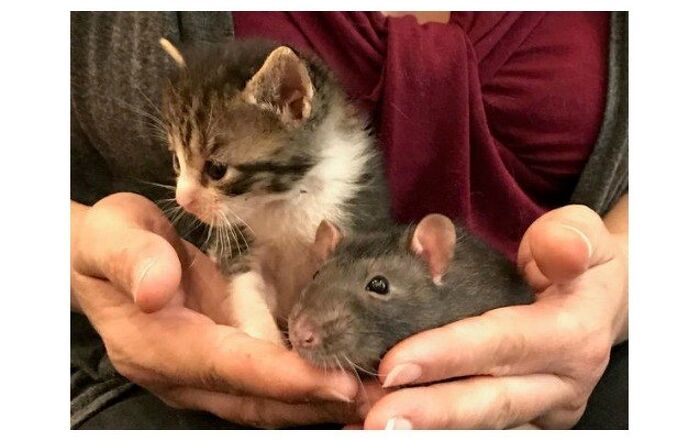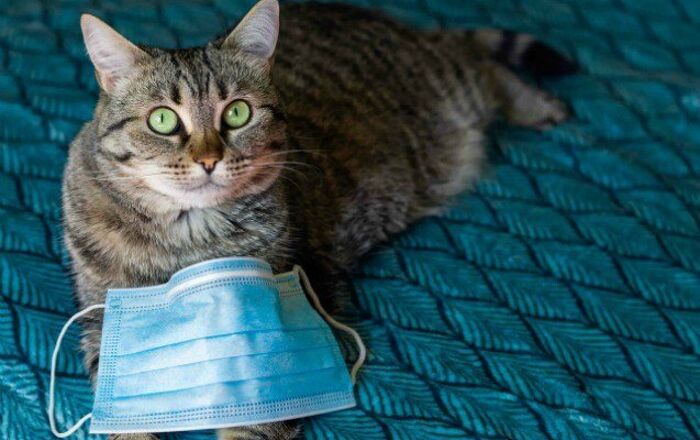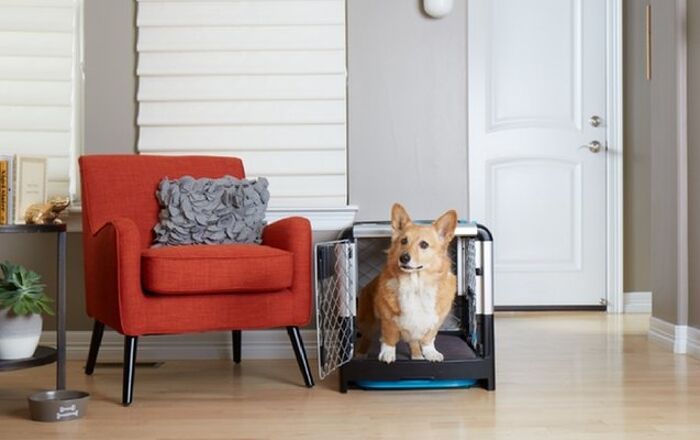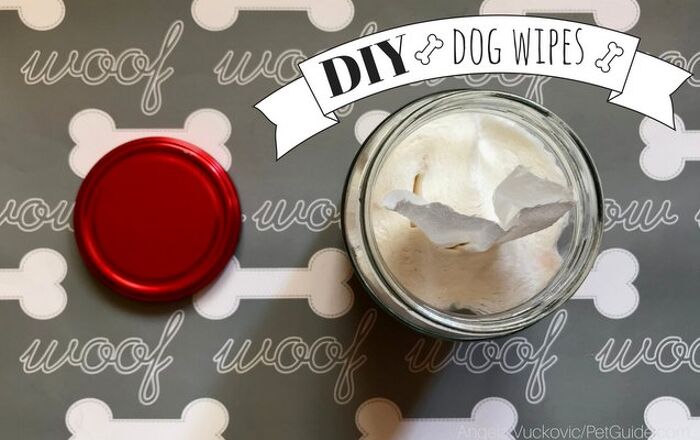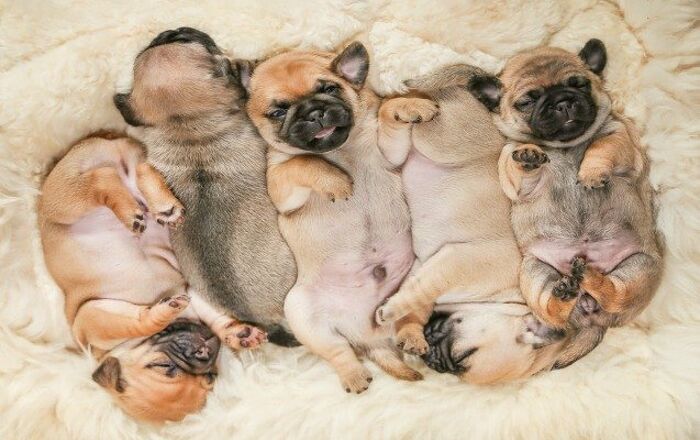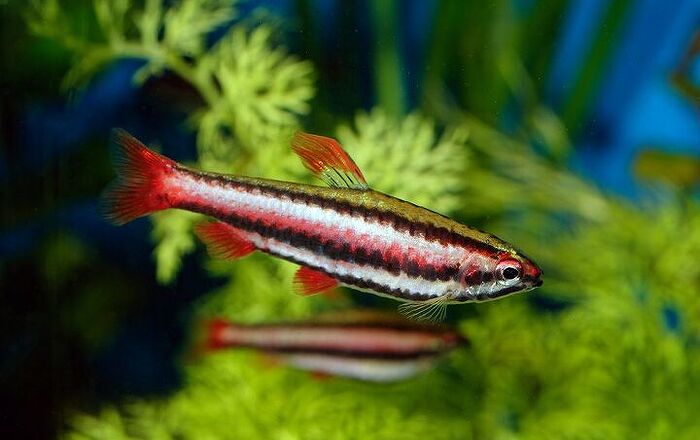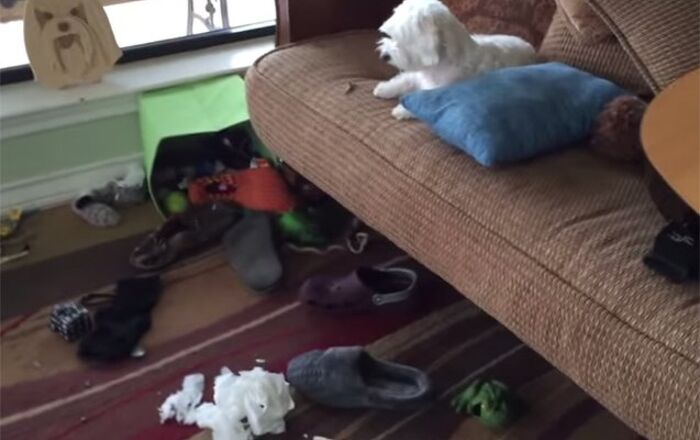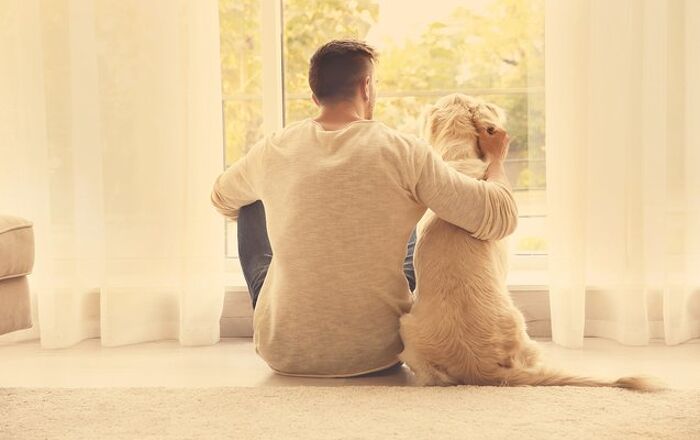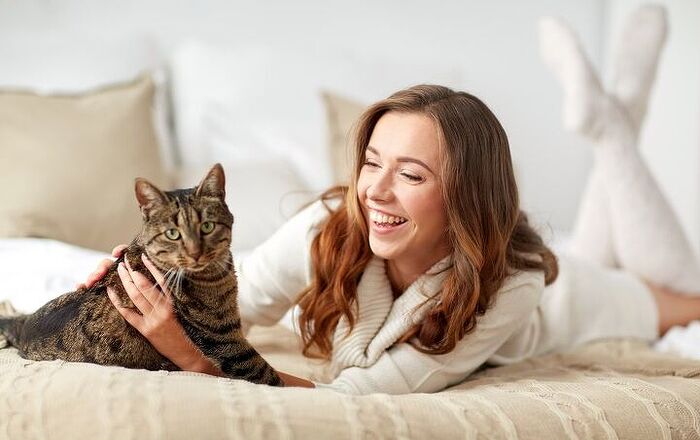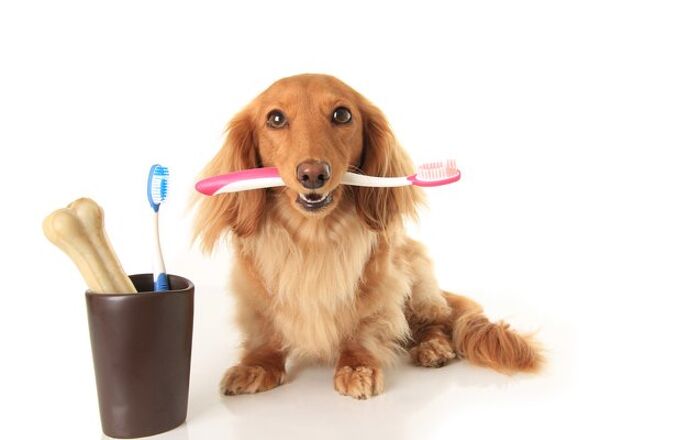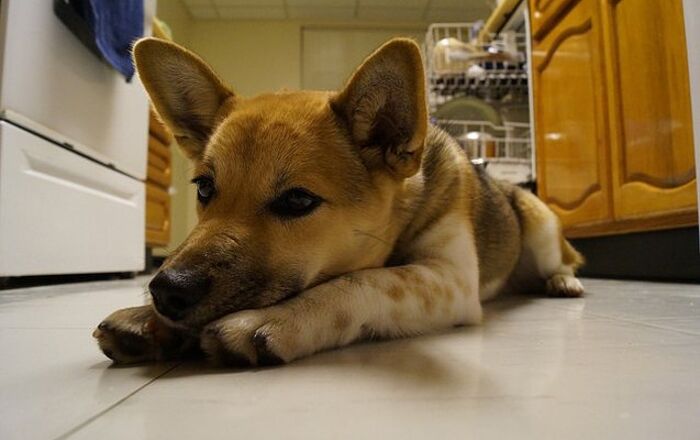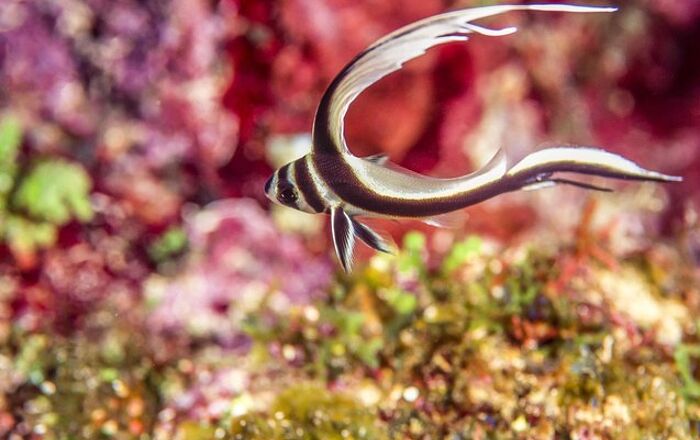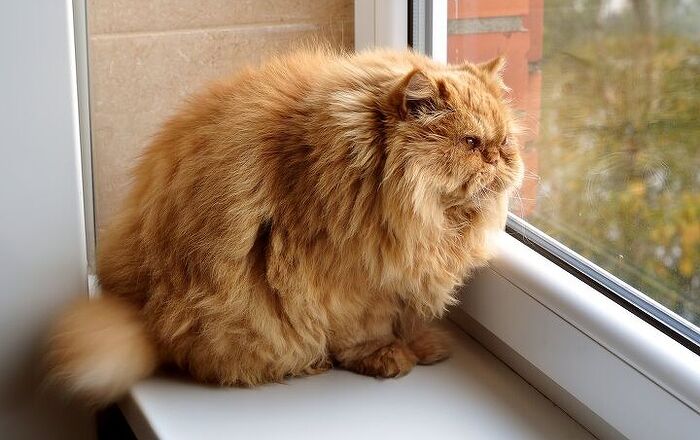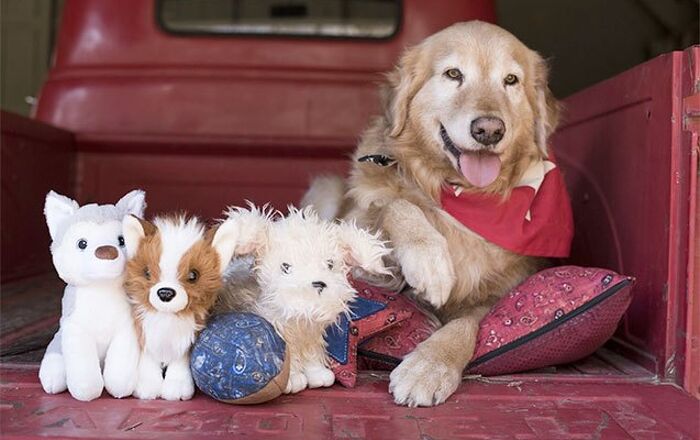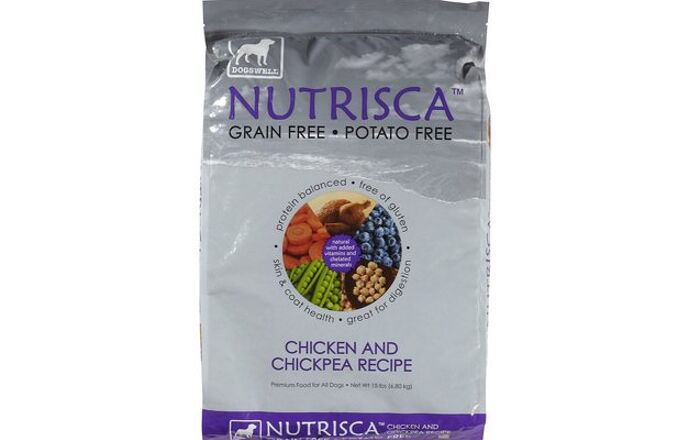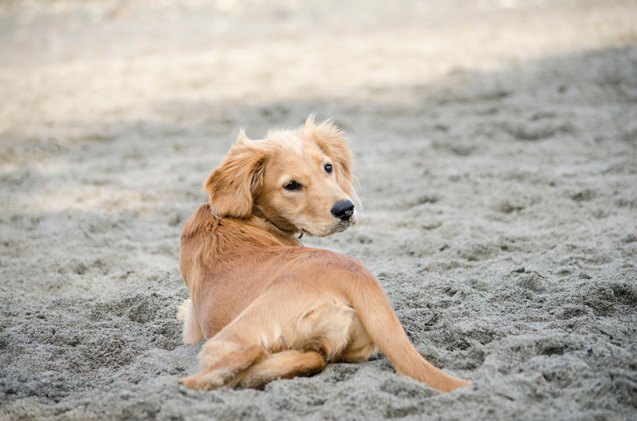
Golden Cavalier Basics
The happy, affectionate Golden Cavalier is an absolutely ideal family dog that brings together the affectionate and gentle Cavalier King Charles Spaniel with the perpetually friendly Golden Retriever for a pooch that loves everyone and everything. This smaller version of a Golden Retriever retains the doe-eyed expression of the spaniel for a pet that gets along with kids and other pets including dogs – however socialization will likely be needed to ensure he is cool with younger kids. This dog loves to snuggle up with his pet parent and be involved in all family activities and while this makes him a fun, engaged pet it also means that he doesn’t do well when left on his own. As with any dog, stress, boredom and frustration can result in destructive behaviors including chewing and barking. His ideal home will have a family member that is retired or works from home. And because of his friendly nature, don’t count on this little guy to be your watchdog.
The happy, affectionate Golden Cavalier brings together the always friendly nature of the Golden Retriever with the loyal and loving traits of the Cavalier King Charles Spaniel for an ideal family dog.
Origin
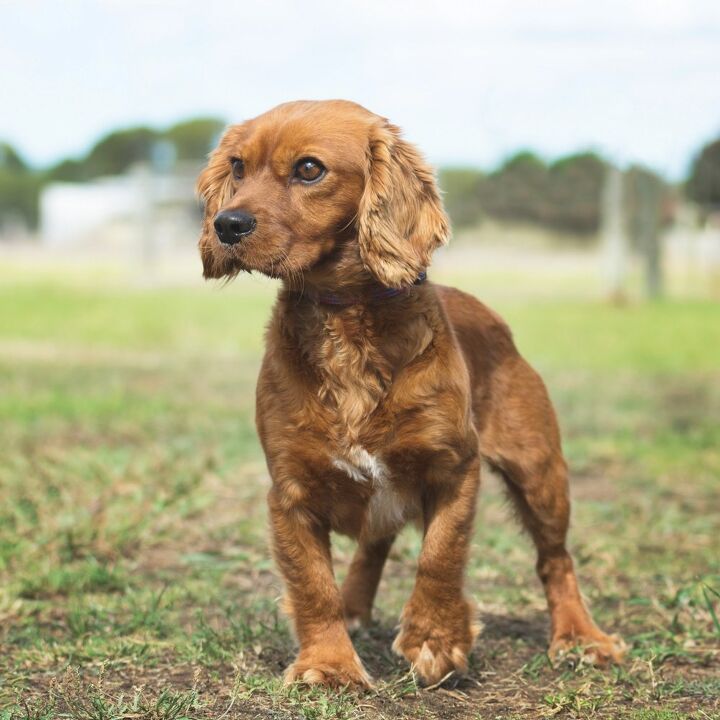
The Golden Cavalier is considered a Designer Dog and as such, likely dates back no more than 30 years to when breeders first began crossing two or more popular pure-breds to produce a dog that was healthier, often non-shedding and sometimes smaller and gentler than many of the foundation breeds. With the Golden Cavalier, his pure-bred parents include the Golden Retriever and the Cavalier King Charles Spaniel and while his own lineage may be fairly recent, his parent breeds date back over 200 years. The Spaniel harkens from early 19th century Scotland where his ancestry includes the English Toy Spaniel – a personal favorite of Mary, Queen of Scots and her family including grandson King Charles – hence the name. The Golden Retriever also has Scottish ancestry and was developed back in the mid-19th century to fill the need for a hunting dog that was adept on land and in water and could bring back waterfowl with a gentle “mouth” meaning without damaging the bird.
Pedigree
While their devotion to advocating for pure-bred dogs precludes the cross-bred Golden Cavalier from joining the renowned American Kennel Club (AKC), both of his parent breeds are not only members in good standing, but North American favorites. The easy-going Golden Retriever has been a member of AKC’s “sporting” group since 1925 and is described as being friendly, intelligent and devoted while the loyal and loving Cavalier King Charles Spaniel became a member of their “toy” group more recently in 1995, and is considered to be an affectionate, gentle and graceful dog. How ideal a combo is that!
Food/Diet
The Golden Cavalier is a moderately active dog who is happy to go out for a walk and have a game of catch but should not be considered highly active. Why mention this in a section dedicated to feeding? Because this dog absolutely loves his food, has a tendency to become obese and can experience joint issues later in life – all of which mean you will need to establish and maintain an ideal weight by selecting foods and treats that are high in protein and low in fillers that can result in him being constantly hungry and potentially becoming a mooch. A Nutrient-rich, top quality kibble is ideal and when it comes to treats, opt for a similarly healthy blend and remember – treats should be dispensed only as earned or warranted. Additionally, you should plan to feed him 2 to 3 smaller meals throughout the day versus allowing him to free feed – because this happy boy will never stop.
The Golden Cavalier a happy, loyal and playful companion dog.
Training
Congratulations, you’re about to train a dog that comes from two breeds that are highly intelligent and eager-to-please… meaning he is likely to be quick to pick up and obey commands and is an ideal choice for the first-time dog owner. The Golden in him adores being praised so plan to incorporate some activities in your training program that will allow him to show off his talents for well-earned treats. And speaking of treats, this pooch loves food so taking a rewards-based approach that includes tasty incentives for a job well done will help to keep him engaged and responsive. The challenge to the Golden Cavalier is that he can take some time to housebreak and in spite of the understandable frustration this can cause, it’s important you stick with a firm, consistent yet positive approach rather than reacting and scolding. Because he is highly sensitive, he may opt to shut down versus change his behaviors and this is never an ideal or productive result.
Weight
Upon reaching adulthood, your Golden Cavalier will weigh somewhere between 35 and 45 pounds. This weight will vary depending on your dog’s gender as well as how heavily the DNA from either side of his parent breeds influences his make up.
Temperament/Behavior
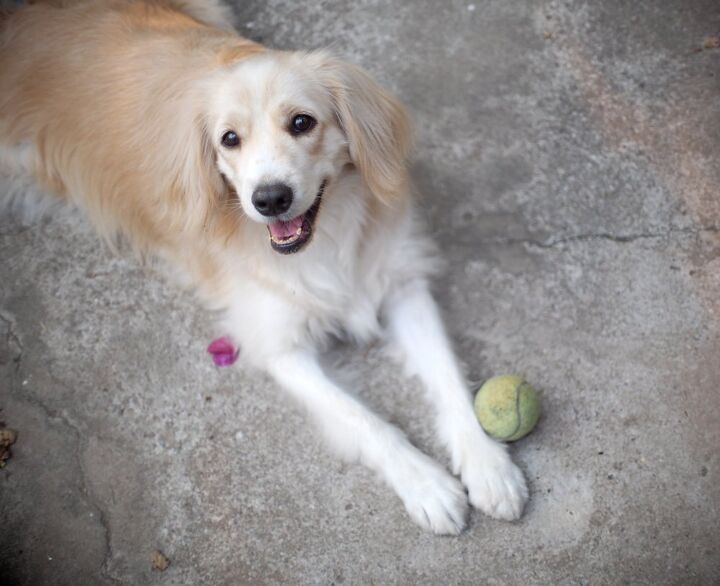
The Golden Cavalier a happy, loyal and playful companion dog that is devoted to his family and wants nothing more than to be involved in everything they’re doing. He bonds quickly with his pet parents and gets along well with kids (socialization is needed if they’re very young), with other pets and even new dogs and because of this super friendly nature, he isn’t inclined to bark at strangers… so no watchdog material with this little guy. The downside to this devout attachment is that he can suffer from separation anxiety if left on his own for long periods so is ideally suited to a home where a family member is retired or works from home. This dog will also need mental stimulation to prevent him from becoming bored, restless and developing destructive behaviors such as barking and chewing. While a true people-pleaser, he can pick up a bit of a stubborn streak from the spaniel side so patience may be needed in getting him into a routine – particularly when it comes to housebreaking.
Common Health Problems
As a Designer Dog, you can expect your Golden Cavalier to be somewhat healthier than either of his pure-bred parents. That said, it’s always important to read up on what your new pup could inherit down the line and in the case of the Golden Cavalier that can include certain cancers from the Golden Retriever as well as joint issues including hip dysplasia from both breeds. The spaniel side of this dog may also bring concerns such as heart disease and an affliction that can be found in brachycephalic dogs and cats (short faced) called syringomyelia (SM). While this list of potential health issues may sound overwhelming, don’t be put off; it’s equally possible that your Golden Cavalier may never experience a sick day in his life.
Life Expectancy
The Golden Cavalier is a medium sized dog that is moderately active and with regular exercise, a diet designed for his age, size and energy level as well as annual check-ups with your vet to monitor his health, you can expect he will live a long, healthy life of between 12 and 15 years.
Exercise Requirements
Because your Golden Cavalier comes from one active breed and one super playful breed, you can expect his exercise needs will be constant but not high intensity. A couple of short daily walks should keep him happy and physically fit while a tossed ball and other forms of interactive playtime will ensure he stays mentally stimulated – important for intelligent dog breeds. Because the Golden in this dog just thrives on getting heaps of praise, be sure to work in some agility work that includes fetching and retrieving, where he can be challenged and rewarded for a job well done. This highly social pooch will love the opportunity to run and interact with other dogs in a leash-free park but before you release him, be sure it’s fully fenced. The curious spaniel in this dog will likely cause him to wander off. Similarly, if you’re hiking be sure to keep track of his whereabouts or keep him on a lead. Because his exercise needs can be met more easily than with larger, more active dogs, he is a great choice for owners living in a house or an apartment.
The loving and loyal Golden Cavalier bonds closely with his family and wants nothing more to hang out with them and be part of their daily activities.
Recognized Clubs
The Golden Cavalier is also known as the Cava-Gold and while his Designer breed status means he will never be considered for the coveted American Kennel Club’s roster of purebred dogs, he is recognized by two lesser known clubs including the Dog Registry of America, Inc. (DRA) and the Designer Dogs Kennel Club (DDKC).
Coat
The Golden Cavalier will typically have the body size and the facial structure – including the shorter nose and large, expressive eyes – of the Cavalier King Charles Spaniel, but the coat of the Golden in terms of color, length and maintenance. Often silky soft and wavy, this dog will be a heavy shedder regardless of which breed influences and you can expect to brush him 3 to 4 times a week – daily during shedding season – to keep him looking his best, to prevent his longer coat from matting or tangling and to eliminate all that loose hair from becoming a problem in your house and vehicle. His ears will be floppy and often longer than those of a Golden, so plan to do a quick weekly inspection and clean with damp cotton balls to prevent a build up of dirt and bacteria that can lead to smelly yeast infections. This type of infection is common in floppy eared dogs due to lack of air movement under the ear flap and can be particularly problematic if your boy picks up the Golden’s love of water. If that’s the case, you’ll need to ensure his inner ear is always properly dried to prevent a build-up of moisture.
Puppies
The Golden Cavalier pup is a smart, happy and trusting little pooch who will bond quickly with whoever he considers his pet parent and will need socialization while still young to help him become comfortable with new faces, sights, sounds and other animals. Training with this little guy should begin early because he can be a challenge to housebreak and you don’t want to revert to scolding – particularly as this dog is highly sensitive and may simply refuse to respond. Socialization can also start while he is just a few weeks old and include gentle handling with exposure to new situations that will help him build a comfort level and confidence when meeting new people. This is important if you plan to share his care amongst family members or if you plan to augment his exercise with a dog sitter or walker. Because this pooch loves his food, begin a feeding regimen early on that includes puppy-appropriate kibble that is spaced out over frequent meals throughout the day. As he grows into adulthood, reduce the number of feedings to just 2 to 3 throughout the day. And with future joint issues a concern, it’s important that playtime and exercise sessions with this puppy not over-exert his tiny limbs. Injuries that happen now can present as serious problems down the line.
Photo credit: Diamond Dove Photography/Shutterstock; Janet Waldbillig/Shutterstock; Chonlawut/Shutterstock

